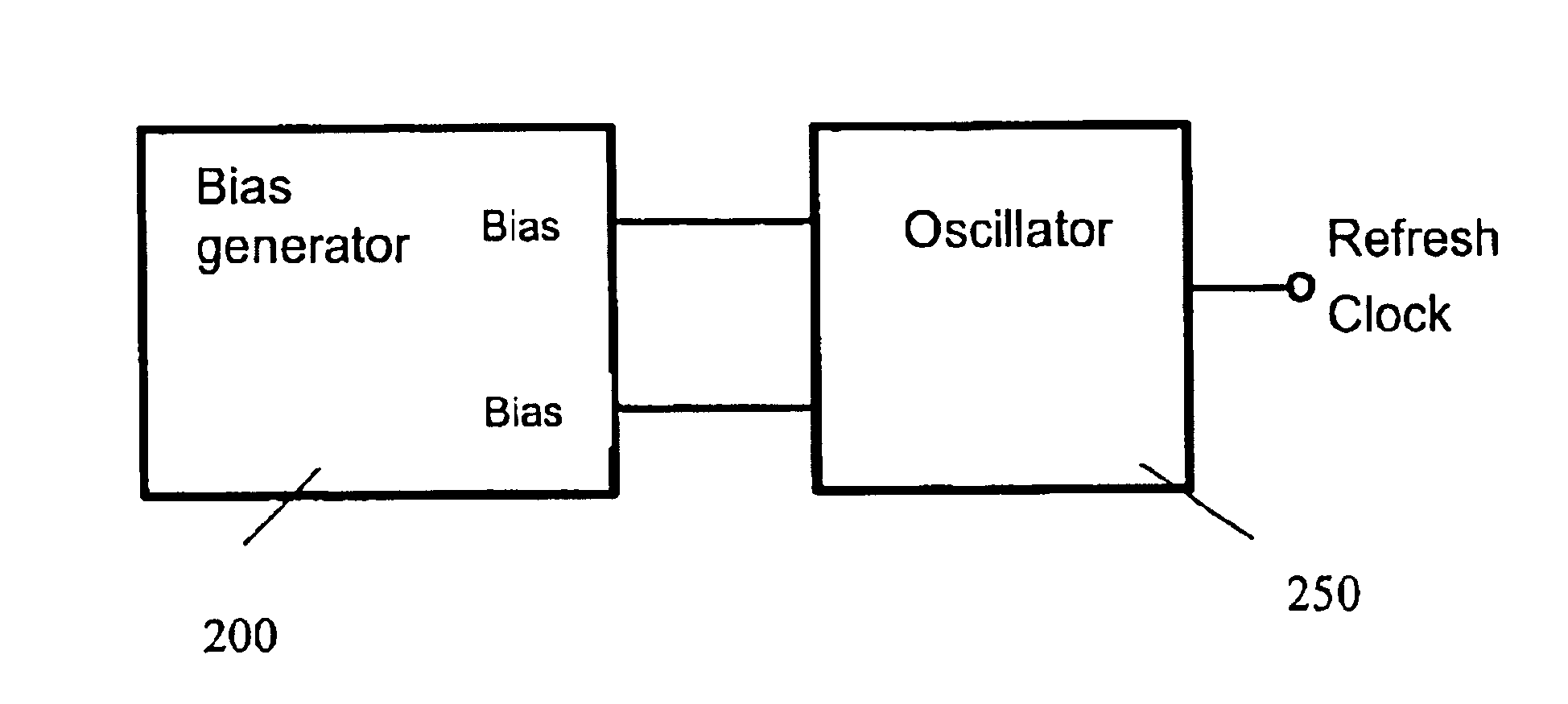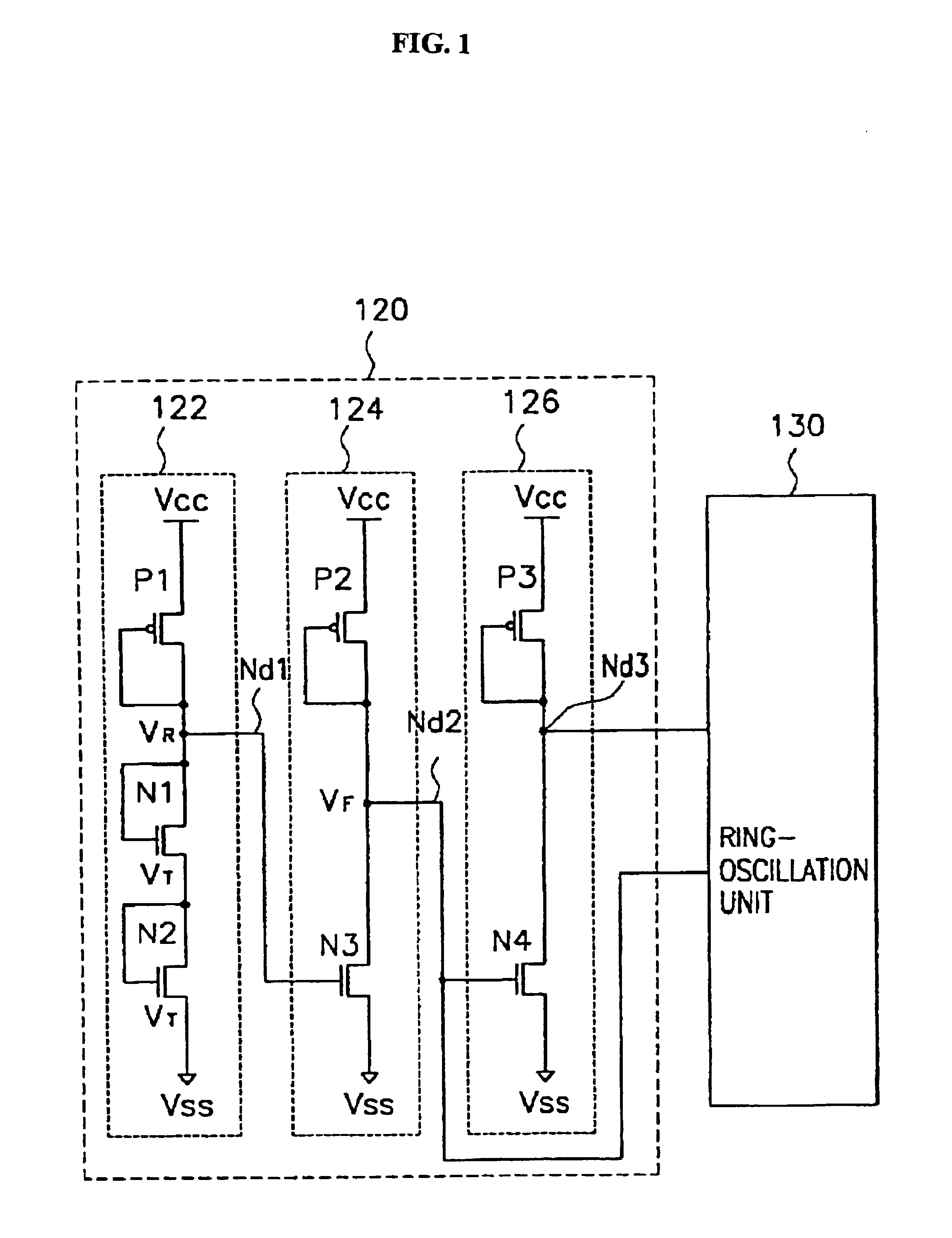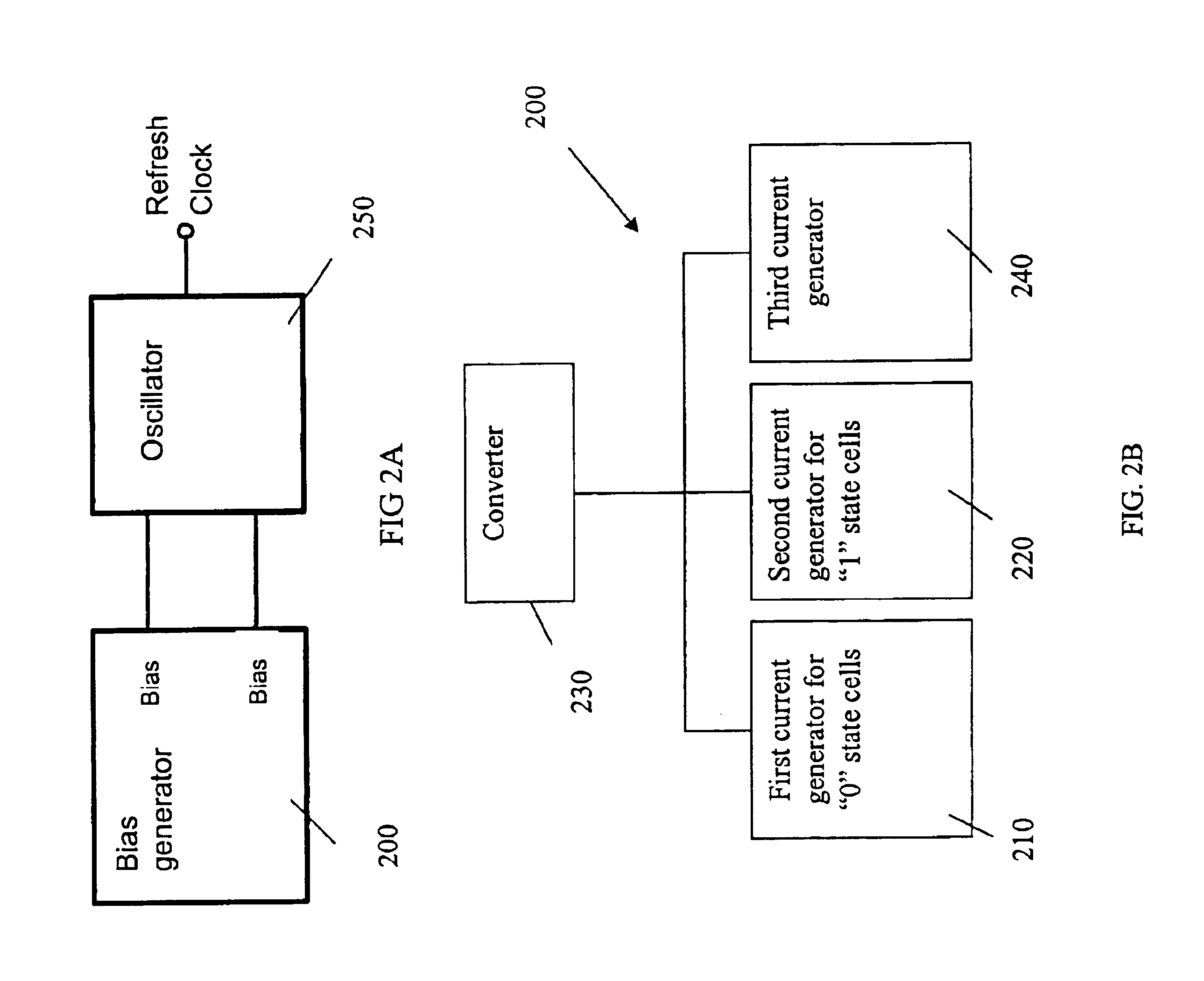Circuit and method for self-refresh of DRAM cells through monitoring of cell leakage currents
a dram cell and leakage current technology, applied in the field of circuits, can solve the problems of not disclosing a circuit or a method for self-refreshing dram cells, information subjected to being lost,
- Summary
- Abstract
- Description
- Claims
- Application Information
AI Technical Summary
Problems solved by technology
Method used
Image
Examples
Embodiment Construction
FIG. 2A illustrates a schematic block diagram of an exemplary circuit for generating a periodic pulse signal for cell self refresh. The circuit comprises bias generator 200 and oscillator 250.
Bias generator 200 is adapted to accumulate leakage currents generated from one or more memory cells and generate one or more output biases for determining a self refresh period. The output biases may then be applied to oscillator 250 for generating a periodic signal pulse in response to the leakage currents.
FIG. 2B is a schematic block configuration illustrating the exemplary bias generator 200 illustrated in FIG. 2A. In the embodiment illustrated in FIG. 2B, bias generator 200 comprises first current generator 210, second current generator 220, third current generator 240, and converter 230. In certain embodiments, if one leakage current fully dominates, the other current generator, e.g. 210 or 220, may not be necessary due to its negligible current contribution.
First current generator 210 is...
PUM
 Login to View More
Login to View More Abstract
Description
Claims
Application Information
 Login to View More
Login to View More - R&D
- Intellectual Property
- Life Sciences
- Materials
- Tech Scout
- Unparalleled Data Quality
- Higher Quality Content
- 60% Fewer Hallucinations
Browse by: Latest US Patents, China's latest patents, Technical Efficacy Thesaurus, Application Domain, Technology Topic, Popular Technical Reports.
© 2025 PatSnap. All rights reserved.Legal|Privacy policy|Modern Slavery Act Transparency Statement|Sitemap|About US| Contact US: help@patsnap.com



